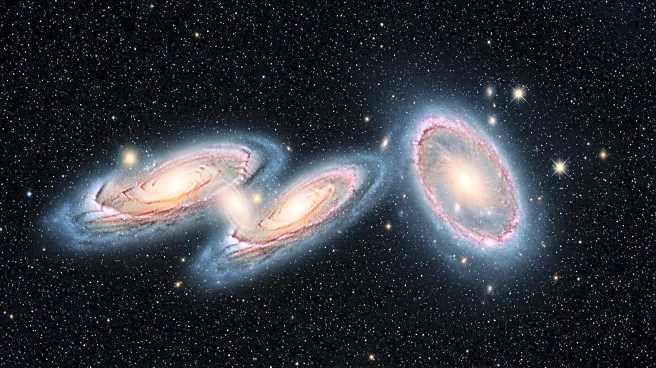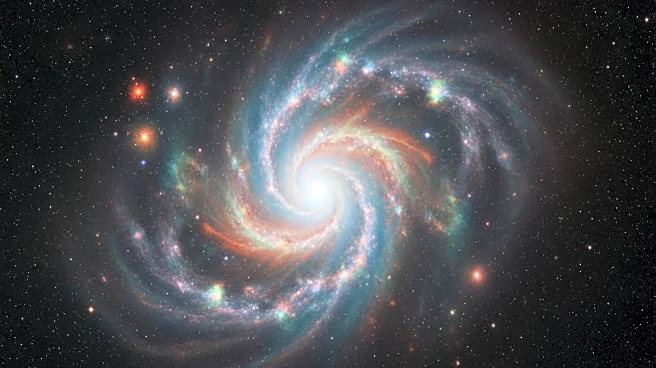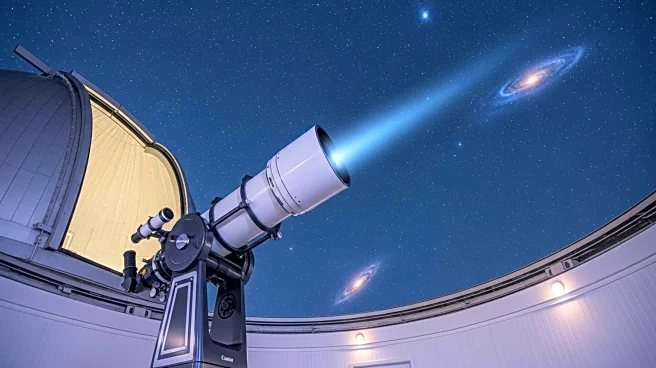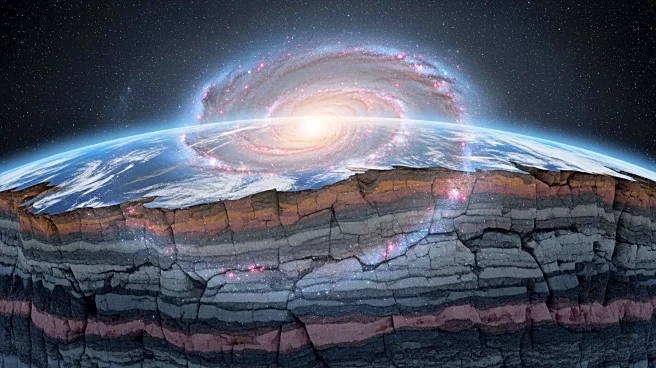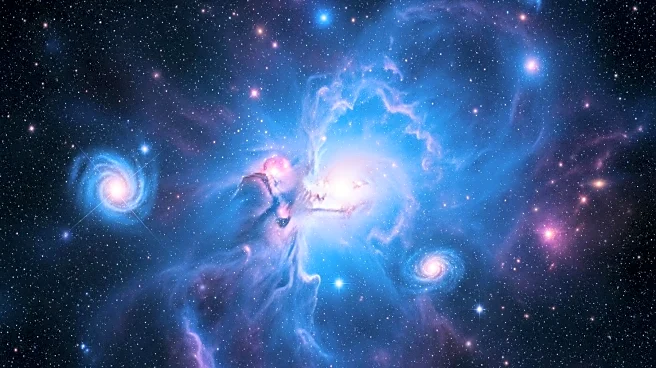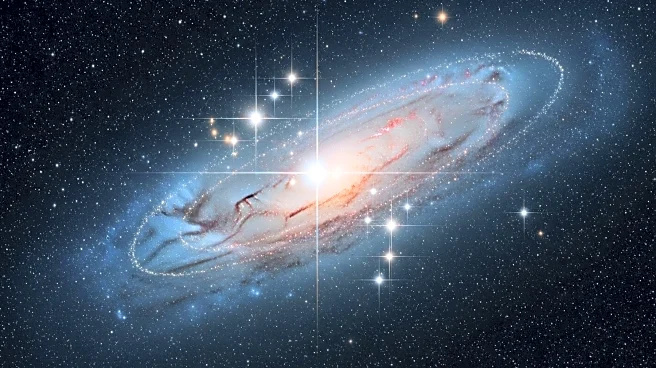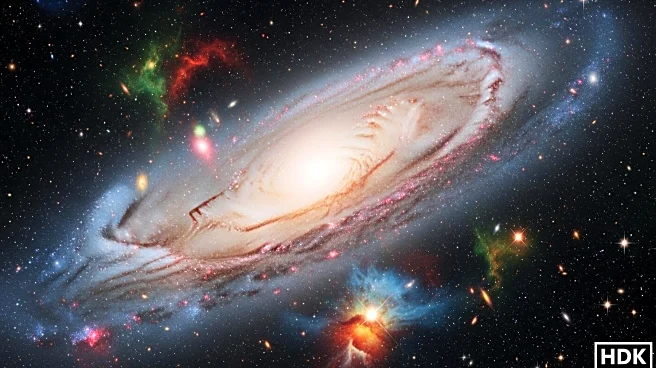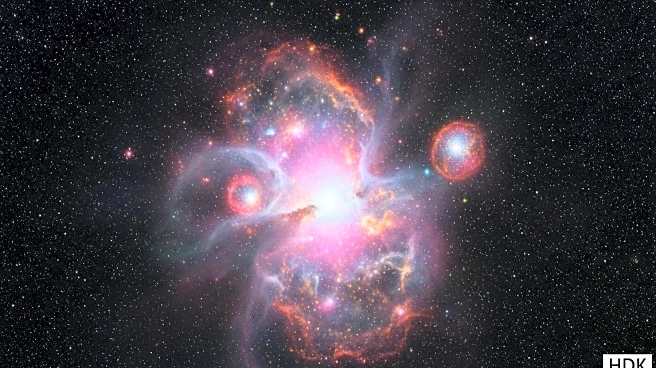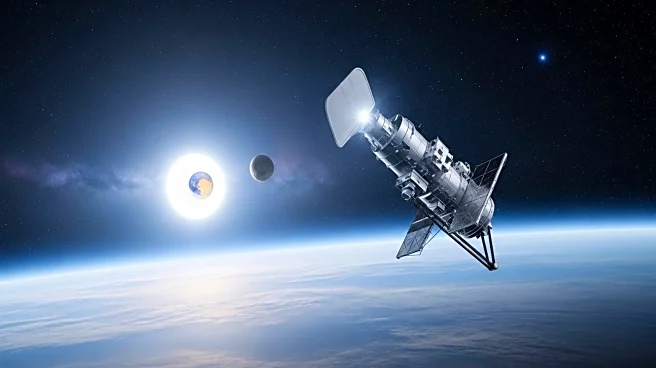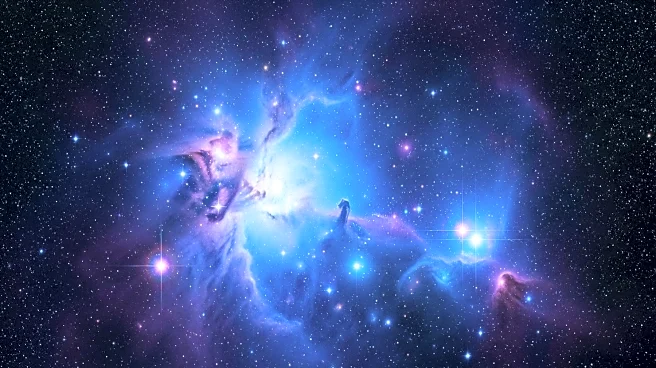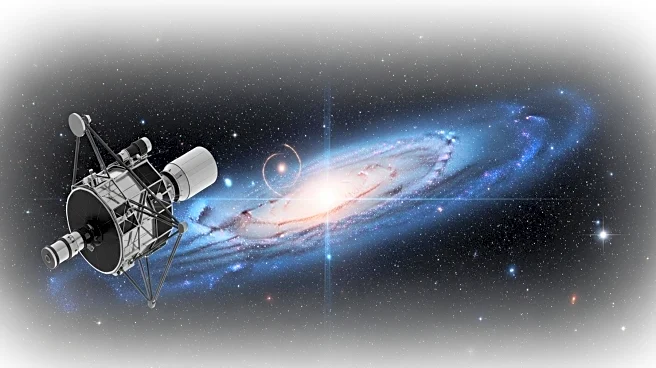What is the story about?
What's Happening?
Astronomers have observed two galaxies, NGC 4532 and DDO 137, falling into the Virgo Cluster at a speed of 547 miles per second. This movement is causing a significant interaction with the surrounding hot gas cloud, resulting in ram-pressure stripping. This process is heating and removing hydrogen gas from the galaxies, forming a 1.6-million-light-year-long tail. The Australian Square Kilometre Array Pathfinder (ASKAP) radio telescope has identified a colossal bridge of gas between the two galaxies, along with additional spurs and clouds of hydrogen. These findings are part of a pilot study for the Widefield ASKAP L-Band Legacy All-sky Survey (WALLABY), which aims to study neutral hydrogen in galaxies.
Why It's Important?
The discovery of the gas bridge and tail provides critical insights into galaxy evolution and the dynamics of galactic gas. Understanding these structures helps astronomers learn how galaxies evolve, redistribute gas, and form stars. The findings contribute to the broader understanding of massive cosmic structures and their life cycles, offering a glimpse into the complexities and history of star formation. This research enhances knowledge about the interactions between galaxies and their environments, which is essential for understanding the universe's large-scale structure.
What's Next?
The ongoing WALLABY survey will continue to study neutral hydrogen across the sky, aiming to uncover more about the cosmic forces shaping galaxies. Future observations may reveal additional details about the interactions between galaxies and their environments, potentially leading to new discoveries about star formation and galaxy evolution. The results could influence theoretical models of galaxy dynamics and contribute to the development of new astronomical technologies.
Beyond the Headlines
The study of these galaxies and their interactions with the Virgo Cluster highlights the importance of understanding cosmic environments and their impact on galaxy formation. The findings may have implications for the study of similar phenomena in other parts of the universe, offering insights into the conditions that lead to star formation and the evolution of galactic structures.
AI Generated Content
Do you find this article useful?
